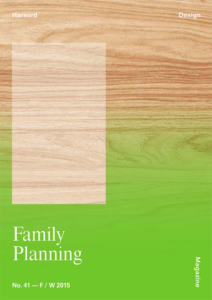Built Gendering
Urban planning is not gender neutral. While there has long been research on how urban systems fail to respond to women’s needs, it was only a decade ago that the subject surged. Since then, countless cities have been host to initiatives addressing a version of the “urban planning gender gap.” Though “gendering” still refers overwhelmingly to a female-male divide, today it is taking on an expanded range of meaning within the household and the city.
Urban spatial organization de nes time. Architect Ana Falú writes on how inconvenient distances to transport, shopping, schools, health services, and jobs deeply affect the way people—particularly women, who run most of the world’s households—experience the city. Gendering often takes on specific forms for different groups of women through ethnicity, race, status, and religion, with certain combinations producing the most devastating effects. To change this, vulnerable women must have the agency to advocate for themselves; they need not charity, but enablement.
The last decade has seen a proliferation of movements by and for women aimed at a critical confrontation with the gendered city and at securing the right to safety in the city. Women are making urban spaces inclusive by developing a series of urban diagnoses and interventions: gender audits of everyday life, city walks to reclaim urban space, and T-shirts with the text “public women” worn in places where women typically experience vulnerability. Urban planners Marta Fonseca Salinas and Sara Ortiz Escalante argue that “neutral and universal planning does not exist. What this neutrality does, is ignore diversity in our society based on gender, origin, social class, ethnicity, religion, sexual orientation, and more.”
One of the most impressive grassroots initiatives is Mother Centers, which originated in Germany in the early 1990s with the aim to build social infrastructure in communities that have suffered economic dislocation. Mother Centers usually reach between 50 and 1,000 families per neighborhood. The centers are self-managed public community spaces that supplement, and sometimes replace, standard social safety nets. They offer peer networks and drop-in childcare, facilitate access to employment resources, provide adult education and job training, and house positive social space for children. When possible, women are paid hourly for services, providing them with much-needed income and a sense of ownership and empowerment. This is a formula that has been, and can continue to be, implemented around the world, regardless of religion, ethnicity, and other markers that tend to divide people. Today there are more than 800 centers globally.
Wars can introduce the most acute hardships for women. Afghanistan has been racked by war for more than three decades, and urban Afghanistan has received disproportionately little aid money for education. The Afghanistan Female Youth Employment Initiative, launched in 2009, educates women aged 15 to 27 living in Mazar-e-Sharif, the capital of the northern Balkh Province. The aim of the project is not only to provide standard education but also to equip women with nontraditional skills so that they can get jobs in Tajikistan, Turkmenistan, and Uzbekistan.
At ground level, most cities are far too messy and anarchic to make built gendering a clear visual fact. But its presence and consequences become clear once we move into spaces where women function as family carers. Urban planning that overlooks this care function works against those in charge of households and children, whether female or male. For now this remains most mothers in most cities in the world.
Saskia Sassen is the Robert S. Lynd Professor of Sociology at Columbia University, and cochairs its Committee on Global Thought. Her most recent book is Brutality and Complexity in the Global Economy (2014).
